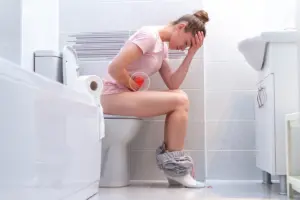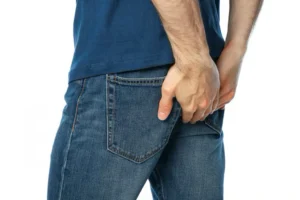
Let’s be honest about the issues surrounding your bottom area. Yes, talking about your backside can feel awkward. But health issues like piles, fissures and fistulas are more common than you realise. Many people suffer in silence because they feel very embarrassed or confused. On top of that, several myths and misunderstandings make it challenging to know. So let’s clear things up.
Piles, fissures and fistulas: What are these conditions?
Piles are swollen blood vessels in or around the lower rectum. They might cause pain, itching or bleeding during bowel movements. At the same time, fissures are small tears or cuts in your skin, often caused by passing hard stools, and they can be very painful. The abnormal tunnel between the anus and the skin near it is prominently known as a fistula. Often, a fissure starts as an infection that doesn’t heal properly.
Also Read | Dealing with piles? Know the symptoms, causes, and best treatment options
Let’s debunk some of the popular myths associated with piles, fissures, or fistulas
Myth: Only old people get piles, fissures or fistulas.
Fact: The problem can happen to anyone, young or old. While the risk may increase with age due to weaker muscles or veins, individuals in their 20s or 30s can also experience these issues. Lifestyle factors like constipation, straining during bowel movements, or sitting too long can trigger issues at this age.
Myth: Spicy food causes piles, fissures, or fistulas.
Fact: Spicy food doesn’t directly cause piles or fistulas, but it can worsen symptoms if you already have them. Spicy food can cause increased burning or itching during bowel movements. The main causes of piles, fissures, or fistulas are low-fibre diets, dehydration, constipation, and poor bathroom habits, not the occasional spicy treat.
Myth: Piles, fissures, and fistulas are the same health conditions.
This confusion is one of the most common misunderstandings. Piles, fissures, and fistulas all involve the anal area, and most of them share symptoms like pain or bleeding. However, they are entirely different conditions with varied causes. Piles are swollen veins, fissures are small tears or cracks, while fistulas are infected tunnels or tracks. It’s important to know the difference so as to receive the right treatment.

Myth: Piles, fissures, or fistulas will go away on their own.
Mild piles or fissures might just improve with simple home care, like drinking more water, eating more fibre, and avoiding straining. But ignoring symptoms can often make things worse. Fistulas almost always need medical or surgical treatment, as they are usually linked to infections that won’t heal by themselves. If symptoms persist for more than a few days, it’s always good to see a doctor.
Myth: Surgery is the only option to resolve piles, fissures, or fistulas.
Fact: Surgery is not always the answer. In the early stages, nonsurgical treatments like creams, stool softeners and dietary changes can help you deal with piles and fissures. Even for fistulas, there are advanced minimally invasive procedures available.
Also Read | Fistula vs Fissure: Understanding the key differences for better health
While no one likes talking about what happens in the bathroom, ignoring the signs or believing common myths can make things worse. Piles, fissures, or fistulas are treatable. The key is early diagnosis and proper care.






